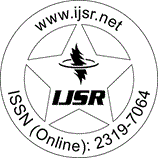Downloads: 114
Comparative Studies | Medical Surgical | India | Volume 4 Issue 10, October 2015
Short Term Comparison of Functional Results in Transforaminal Interbody Fusion and Posterolateral Fusion for Spondylolisthesis
Dr. Ravi Kumar T.V. [3] | Dr. Shivaprasad M.S. | Dr. Daksh Gadi [3] | Dr. Subodh Pathak [2]
Abstract: Spondylolisthesis is a subluxation of vertebral body over another in sagittal plane. Earlier it was thought tobe due to defect in the pars interarticularis at birth but now newer concept suggests that thedefect occurs due to small stress fractures that fail to heal and form a chronic nonunion in the most common type that is isthmic subtype B. The treatment in spondylolisthesis is based on the severity of symptoms and not the grade. Usually the lower the grade the lesser the symptoms. When the slip is more significant, there may be a higher risk of the problem progressing, and surgery may be favoured. In addition, patients who have symptoms of nerve compression are more likely to have surgery recommended. Basically the ideal treatment remains controversial. A common consensus has not yet been reached on surgical management of isthmic spondylolisthesis especially regarding surgical procedure. Both transforaminal interbody fusion (TLIF) and posterolateral fusion (PLF) have been described as a surgical modality in the literature but with the available literature it is still difficult to describe which among the two has a better outcome. Hereby in our study we are comparing the results of the two procedures done on patients of spondylolisthesis
Keywords: TLIF, PLF, Spondylolisthesis, pedicle screws
Edition: Volume 4 Issue 10, October 2015,
Pages: 1209 - 1213
